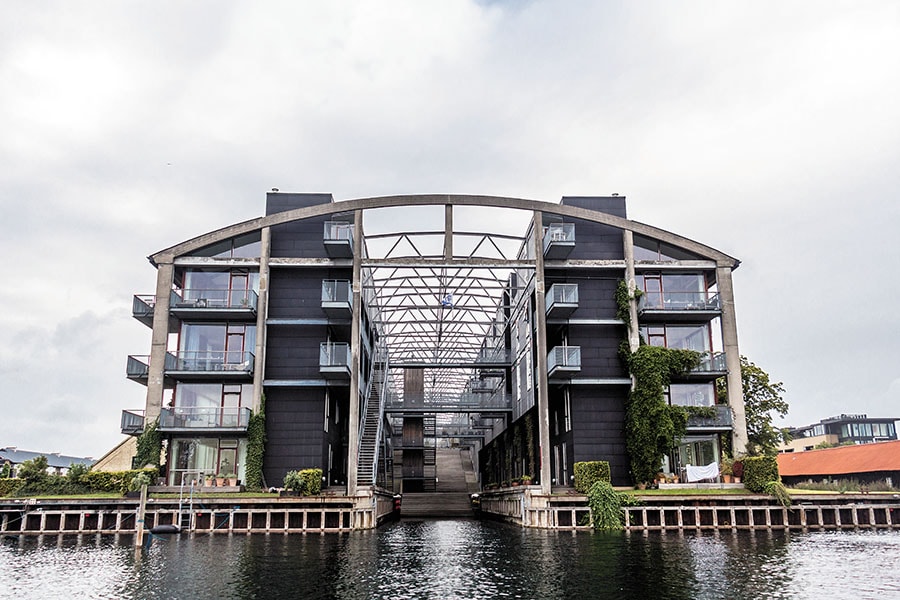
What Denmark can teach us about sustainability
Denmark, long known for its design aesthetics, is using its expertise to integrate sustainability into everyday life
 The Designmuseum Danmark in Copenhagen
The Designmuseum Danmark in CopenhagenImage: Shutterstock
I looked at the pièce de résistance: Juicy, blood red pieces of beet glazed in plum vinegar, laid on a bed of gammel knas cheese spread on a piece of rye bread, peppered with buckwheat and sorrel. It looked like a piece of art. I was having lunch at Selma in Copenhagen, the restaurant bestowed with the Bib Gourmand award this year by Michelin. My meal for the day was the smørrebrød, an open-faced sandwich that the Danes have for lunch. But this wasn’t the traditional sandwich with toppings like herring or pork belly; this was a vegetarian take and, unlike the regular ones, the slice of dense rye bread was toasted. Using sustainable products like fresh vegetables from local suppliers, chef Magnus Pettersson has been creating new avatars of the regular smørrebrød in his kitchen at Selma. It was a simple meal with emphasis on good quality.
Pettersson’s efforts in the kitchen and in sustainable practices are a contemporary addition to the Danish design scene—it cuts across textile, food, furniture, industrial design, fashion, architecture and more—which has been part and parcel of Danish lives since the age of industrialisation. Iconic designers and architects, such as Hans Wegner, Arne Jacobsen and Kaare Klint are just a few of the many visionaries with creative and innovative minds who were instrumental in shaping the Danish design industry. But today, the Danes are using their design expertise to seamlessly integrate sustainability into every aspect of their lives.
“The good chair is a task one is never completely done with,” goes a quote by Hans Wegner. The chair, a piece of furniture with four legs and a seat, I assumed was the simplest of all. But at the Designmuseum Danmark in Copenhagen it was a revelation when I got to understand not just the science and complexity of chair designing, but also the many ways in which exemplary Danish designs have touched the lives of Danes.
“We usually say Danish design is about evolution, not revolution. By this we mean that Danish design stands on a long tradition of improving international and historical furniture. Instead of erasing history, it builds on previous prototypes,” says Anne-Louis Sommer, museum director and adjunct professor at University of Southern Denmark. “The so-called Klint-school had a big influence on what we call Danish design today. The idea was to take something good and make it better. Refining pre-existing furniture types, always with an eye for functionality and human needs.”
 A torpedo factory in Holmen that has been converted into a residential neighbourhood
A torpedo factory in Holmen that has been converted into a residential neighbourhoodImage: Rathina Sankari
The social democratic movement in Denmark, with equal rights and a strong welfare system, was a major influence on Klint’s work. His focus on functionality and users paved the way for the future of Danish design. Sommer swears by the 1930’s Klint furniture in her office that she continues to use every day.
“Danish aesthetics since the modern times are much simpler, and not as labour-intensive,” says award winning ceramist Inge Vincents, the maker of beautiful yet simple vases, mugs and bowls of translucent porcelain. “Craftsmen in the olden days were very well paid and you could work on ornamental pieces and they wouldn’t be that expensive. That’s not possible today. If I spend two weeks decorating a pot and I must pay rent and everything, nobody would be able to afford that pot. So Danish aesthetics are quite simple. It balances functionalism and beauty.”
(This story appears in the 30 November, -0001 issue of Forbes India. To visit our Archives, click here.)


 (Clockwise from left) Manfred’s, a restaurant on Jaegers-borggade, is committed to sustainability, natural wines and high-quality ingredients; items from a glass-blowing workshop located at Reffen, an organic street food market in Copenhagen; about 45 percent of Copenhagen residents cycle to work
(Clockwise from left) Manfred’s, a restaurant on Jaegers-borggade, is committed to sustainability, natural wines and high-quality ingredients; items from a glass-blowing workshop located at Reffen, an organic street food market in Copenhagen; about 45 percent of Copenhagen residents cycle to work.jpg) Energy plant CopenHill, which filters out pollutants before spewing gas and houses a ski slope, hiking trails and the world’s tallest climbing wall
Energy plant CopenHill, which filters out pollutants before spewing gas and houses a ski slope, hiking trails and the world’s tallest climbing wall Cirkelbroen Bridge, a pedestrian-only space
Cirkelbroen Bridge, a pedestrian-only space



